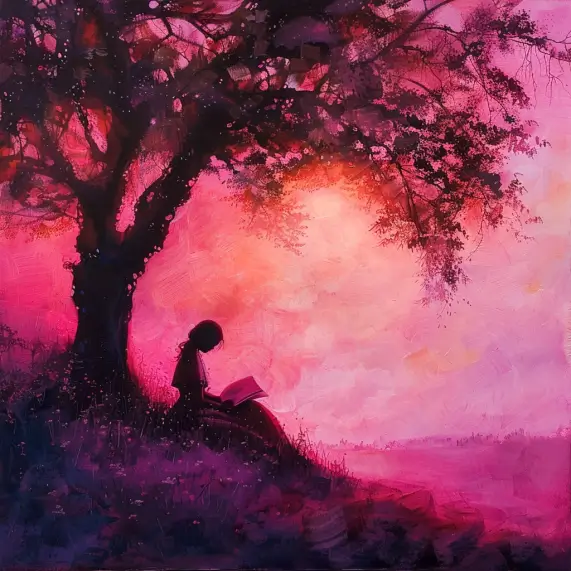There she stood, barely eighteen, draped not in jewels but in destiny. On a soft June morning in 1837, a young Alexandrina Victoria became Queen of Great Britain — the start of an era that would bear her name and change the world. She was small in stature but mighty in spirit, a woman who would transform duty into devotion and sorrow into strength.
Beyond the palace walls, the Victorian world was awakening. The clatter of horse-drawn carriages echoed along cobblestone streets, while chimney smoke curled gently above rows of brick houses. In small parlors lit by candlelight, families gathered close around their hearths. Mothers stitched stockings by the fire, fathers read aloud by the glow of oil lamps, and eager little children pressed their faces to frosted windows, waiting for the first snowfall of Christmas Eve. Snowflakes drifted softly over London rooftops, blanketing the world in a hush of wonder — a world both humble and hopeful beneath the reign of their young queen.
Victoria’s rule began in an age of progress — steam trains, telegraphs, and industry reshaping every horizon. Yet amidst this revolution, she never forgot the tender art of feeling. She fell deeply in love with Prince Albert, her cousin and confidant, whose intellect matched her will. Together they became the symbol of domestic devotion, the heart of a nation learning to find beauty in home, hearth, and holiday. It was Victoria and Albert who made Christmas the celebration we know today — a festival of family, evergreen trees, and candlelight joy.
When Albert died, her world dimmed. Draped in black for the rest of her life, Victoria mourned him deeply — yet from her grief, she built resilience. She continued to reign with quiet strength, showing that even in sorrow, one could live nobly and fully. Her diaries, filled with reflections and tenderness, reveal a woman who loved intensely, worked tirelessly, and never forgot the power of sentiment.
Queen Victoria claimed life not through grandeur but through grace. Her reign was a tapestry of progress and poetry — a reminder that even queens have hearts that break, dreams that fade, and memories that linger like the glow of a Christmas candle. Through her, we learn that to live elegantly is to live authentically, finding meaning in the rituals that make us human — tea at four, letters sealed in wax, and evergreen trees sparkling in the stillness of December.
Victorian Living: The Art of Grace and Detail
To step into a Victorian home was to enter a world where every detail mattered. Life moved at a gentler pace, guided by ritual, sentiment, and a sense of purpose in even the smallest act. Lace curtains framed windows that looked out onto snow-laced gardens, and the air carried the fragrance of beeswax polish and evergreen branches. The hearth was the soul of the home — a gathering place where conversation, laughter, and reflection flickered beneath the steady glow of candlelight.
Victorian living was more than decor; it was a way of being. Days were filled with quiet rituals: writing letters with pressed wax seals, arranging flowers by color and meaning, steeping afternoon tea in fine china, and recording daily thoughts in journals bound with ribbon. These rituals were not about grandeur but intention — the art of slowing down to notice beauty, to feel deeply, to live gracefully. It was a time when one’s surroundings mirrored one’s soul: ornate, sentimental, and enduring.
Christmas, in particular, brought forth the heart of Victorian grace. Parlors shimmered with holly and ivy, oranges studded with cloves, and garlands draped across mantels. Families sang carols beside the fire, exchanged handmade gifts, and gathered around the Christmas tree — a tradition introduced by Queen Victoria and Prince Albert themselves. The tree stood as a symbol of hope and togetherness, its candles glowing like promises against the long winter night.
To live like a Victorian today is to reclaim the beauty of intention — to fill one’s home with warmth, meaning, and memory. It is to choose candlelight over haste, handwritten words over hurried texts, and the quiet joy of presence over noise. In this way, we echo Queen Victoria’s world: one where elegance was not merely worn, but lived — where every detail whispered of love, legacy, and light.
A Victorian Christmas Home: Candlelight, Castlecore, and Charm
Imagine a home at Christmastime, where the scent of pine and clove drifts through the air, and every surface glimmers with the soft reflection of candlelight. In the Victorian era, Christmas was not merely a date on the calendar — it was an unfolding ritual of beauty and belonging. Parlors transformed into sanctuaries of warmth and wonder, filled with the gentle crackle of fires, the rustle of lace, and the shimmer of glass ornaments catching the glow of flickering candles.
To bring this spirit to life today, we turn to the allure of castlecore — the art of weaving majesty into the everyday. Think high-backed chairs draped with velvet throws, brass candlesticks lined along mantels, and the quiet dignity of antique mirrors reflecting a thousand tiny lights. Victorian charm meets castlecore grandeur when simplicity meets sentiment: old books stacked beside a vase of winter roses, handwritten cards on silver trays, and a teacup resting beside a window where snow — or imagination — gently falls.
Every detail was an expression of care. The Victorians believed that a well-loved home was an extension of the soul, and that beauty had the power to uplift the spirit. In this, their world mirrors ours — the yearning to create spaces that hold memory, comfort, and meaning. To decorate like a Victorian is to embrace nostalgia, to let history breathe again through polished wood, lace-edged linens, and candlelit corners that whisper stories from long ago.
As you prepare your own Christmas home, let the Queen’s world inspire you: adorn your tree with heirloom ornaments, fill your rooms with the fragrance of evergreen and orange, and light candles not just for decoration, but for remembrance. For in the gentle glow of a Victorian Christmas, we are reminded that elegance is timeless, that beauty need not be grand to be profound, and that the truest luxury lies in the memories we make — and the love we choose to keep aglow.
Claiming Life Like a Victorian Queen: Reflections by Candlelight
As twilight falls and candlelight softens the edges of the room, we are reminded that every era has its lessons — and the Victorians, led by their steadfast queen, knew the art of living with purpose. Queen Victoria faced the extremes of human experience: joy and loss, celebration and solitude, duty and devotion. Yet through it all, she continued to honor life — in its beauty, its heartbreak, and its endurance.
To claim life like a Victorian queen is to hold fast to the things that matter: the warmth of family gathered close, the comfort of ritual, and the courage to keep loving even when shadows fall. It is to find poetry in ordinary days and grace in the smallest gestures — the lighting of a candle, the sharing of tea, the act of creating beauty within your walls no matter the season.
At Christmas, this truth shines brightest. Amid garlands and glittering trees, we find a reflection of something deeper — our longing for connection, remembrance, and renewal. The Victorians understood this well: their traditions were never about opulence, but about heart. They celebrated togetherness, reflection, and hope — values that transcend time and fashion.
So, this Christmas, let us draw from Queen Victoria’s quiet wisdom. Let us decorate not only our homes but our hearts — with gratitude, kindness, and grace. For in doing so, we claim our own place in the great story of life, one candle, one memory, one loving gesture at a time. And as the last light flickers across the velvet of night, may we remember that elegance begins within — and that every soul, no matter how humble, carries a little of the queen’s glow.
Love Amanda






Leave a Reply
You must be logged in to post a comment.